I’ve been following Sandy Phimester’s work for a number of years now – I’d go as far as to say that he’s one of the photographers whose work I admire the most. The funny thing is, the sort of photography he shoots is not a sort that I regularly find myself drawn to. But this fact in itself says something to me about the strength of the images.
To me, Sandy’s work transcends its genre. It’s portraiture as its core, but to me tells a story of more than just the subject. The images are appear constructed, yet manage to do so without feeling contrived or forced. He also has a mastery of light, colour and has always seemed to me to know exactly the kit and media he needs to fulfil his vision. All this being the case – and after a chat with my mate Adam about the quality of Sandy’s work – I decided I would approach him about being interviewed for the website.
The following, as is usually the case with my interviews, is a slightly edited email transcript. If you have any questions, I am sure Sandy will be happy to entertain them in the comments or via his Instagram.
H: Ok, let’s kick off with the easy stuff: Who are you? Where are you from? What do you do for a living? You know… the background stuff.
S: My name is Sandy Phimester, I’m a portrait photographer from western Canada. I was born in a small northern town called Peace River but moved to Edmonton with my family when I was a little kid. Growing up I was way more into making music than any visual art forms. Creating stuff was something I was excited about from very far back into my childhood. I spent a lot of time making music with friends and eventually got into touring and making some recordings. I didn’t discover my love of photography well into my 20s and portrait photography came a little after that. Soon music started taking 2nd place in my interests in terms of making something, and I never really looked back.
Photography is my main source of income, which I’m very thankful for. It was many years of being next to broke trying to make things happen here. But I’m happy where I’m right now. Always looking for something new to challenge myself with.
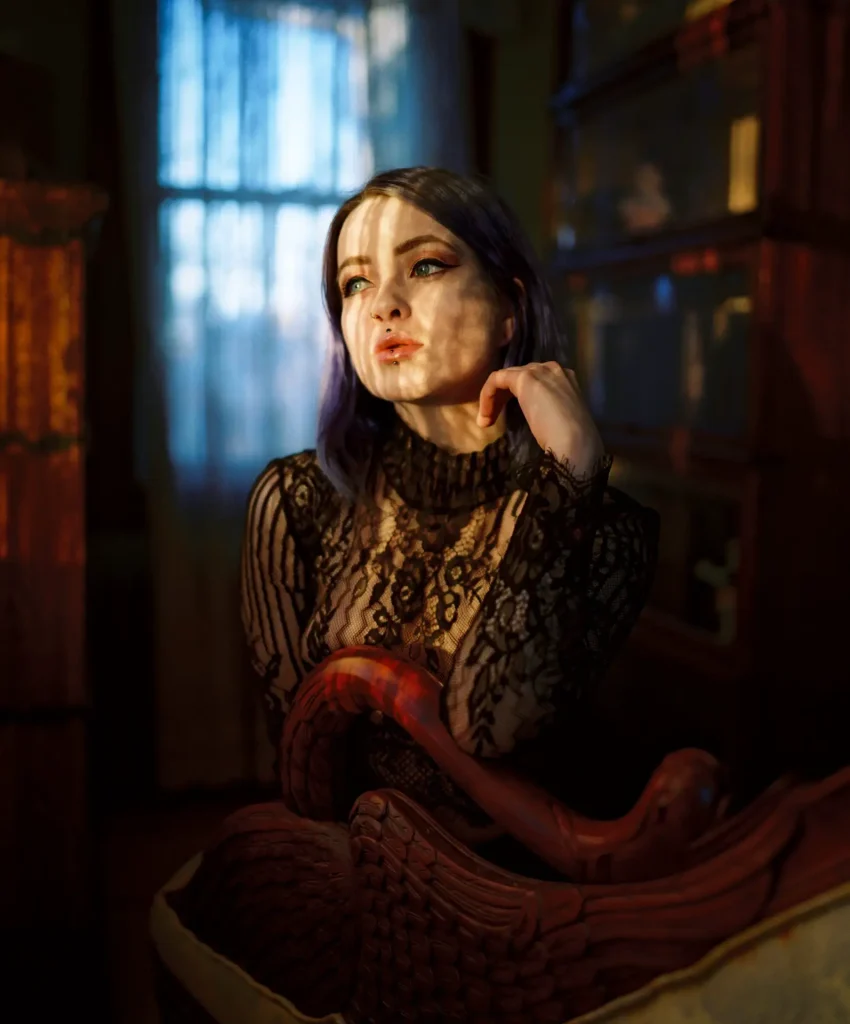
H: The beginning of your photography journey then – how did you discover it, what was the first event that triggered the switch away from music to photography? And you mention that portrait photography came a little later, what came first, and how did that switch to portraiture happen?
S: My discovery of photography happened during a tour across Canada with our band. Shortly before we left my dad had asked me if I had a camera, or if anyone was taking one with us on the trip. Of course, no one planned to take one, which now seems pretty funny, but he thought that was sort of a silly, missed opportunity.
He bought me a nice digital point & shoot for the trip so that I could take nice photos and record short videos. It was perfect for that trip. The entire journey cross country took about a month with playing shows and travel in between. I was documenting the trip at first since it seemed the smart thing to do but quickly started to love taking snapshots of more. I was taking funny photos of the band and things we did, but also photos of things that really interested me. It was my eyes being opened to something new, and this whole new world of photography opened up for me.
After the tour, I kept up with taking photos everywhere I went. I always had that little camera with me and used it non-stop for the next year or so. It was mostly photos of friends, parties, music shows, travel and mostly random moments throughout the day – just whatever I saw. I was kind of obsessed with it.
For the most part, my photography then was capturing daily life. I wasn’t trying to be anything, I only knew the basics of my camera and still didn’t understand or even really care about the technical stuff. I distinctly remember not knowing what ISO 1600 meant, or f/4.5, but I knew I loved how taking photos of stuff made me feel.
Later I got my first DSLR, a Canon XTi, and a few years after that I got a 5D Mark II when they first came out. That’s right when I started considering portraiture, as I found taking photos of my friends was my most favorite way to make photos. Slowly it became something I was more interested in, and not just for a good laugh or fun memories, but as something I wanted to express myself with, and as a means to feel good about “making” something.
That said, I didn’t truly fall in love with portraits until I started playing around with film cameras sometime after owning the 5D Mark II. I had gotten lost in this sea of confusion and lack of interest. I had fallen down this hole of thinking I needed to shoot lots and edit lots, to get the look I wanted. I spent more time editing a photo than taking one. I felt more like an editor, than a photographer. There’s nothing wrong with that, but it wasn’t for me. I grew tired of that vision and decided to give it up.
I started mixing in some film to make a move with my creativity and hybridize my shooting. But eventually, I came to understand what made me excited was just the photo part. Not the computer part.
I haven’t looked back since then and seem to gravitate more and more towards that idea of photography being as simple and potentially as powerful as what’s right in front of you. I like the idea of the right moment, the right light, the right scene and the right emotional connection, something that keeps you looking. It’s really not easy, and I struggle with it all the time, but it’s what keeps me excited for more.
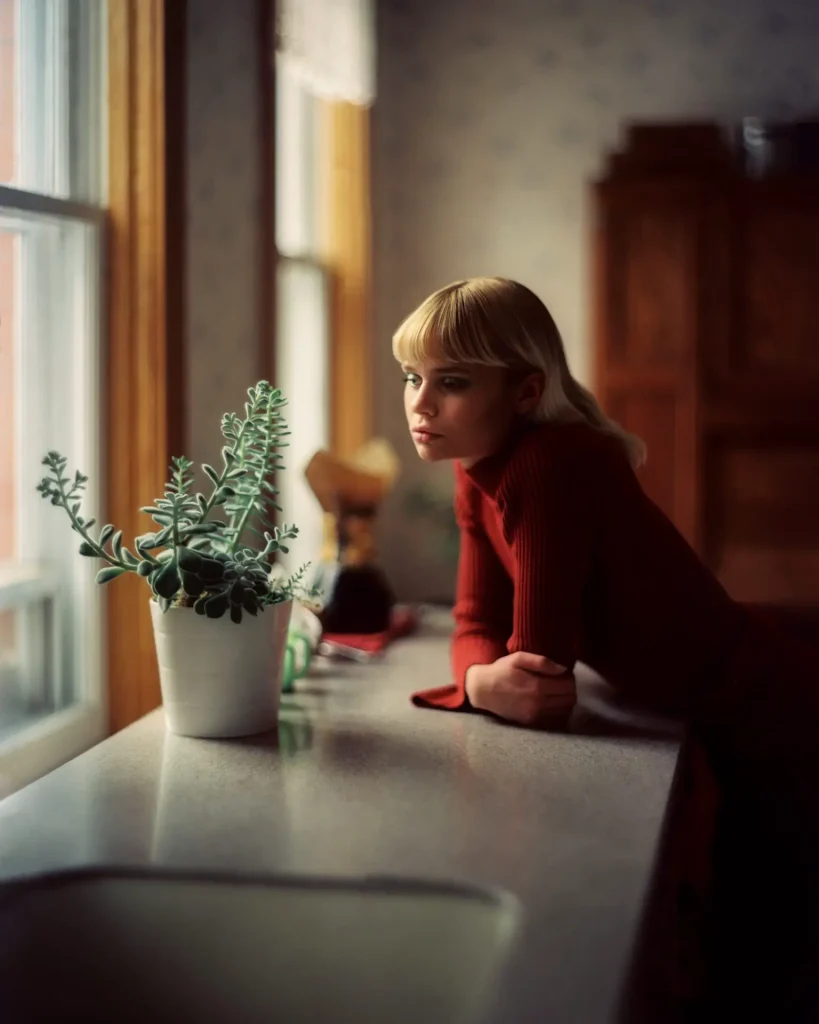
H: Ok, there’s loads in there I want to pick apart, but let’s finish the story part first I think. You say photography is now your main source of income. How did that come about, and how do you make your cash? I seem to remember a little while ago you were developing and scanning for people, is that still something you do, or is it the portraiture you make money from?
S: It came about through me being extremely stubborn. I spent the better part of ten years being nearly broke but since I disliked the thought of a normal job so much I just kept at it. For a few years it was shooting weddings, but I lost interest in that really quickly. And didn’t think it was right to ask for good money to shoot a wedding and I’m not interested or passionate about it. I was scanning a lot of film for people on my Frontier, but again, it was something I lost interest in.
I love scanning my own work, and I will occasionally scan for someone else as a favor or just if they hang out while I do it. Then it’s fun again. Now it’s mainly portrait work. I do real estate photography to make ends meet and save for later in life. There’s no real outlet there for me, it’s a great business decision – an easy way to make money but it gives me the time and space to focus on the things I really care about creatively.
I make my own schedule and pick and choose jobs, it’s all really at the service of me needing that outlet and passion to create. I can make room for that, and dedicate huge chunks of my time to planning, shooting, developing, scanning, etc. I love that, the entire process. I don’t like being rushed and always want to take my sweet time. This is about the best I could ask for, all things considered.
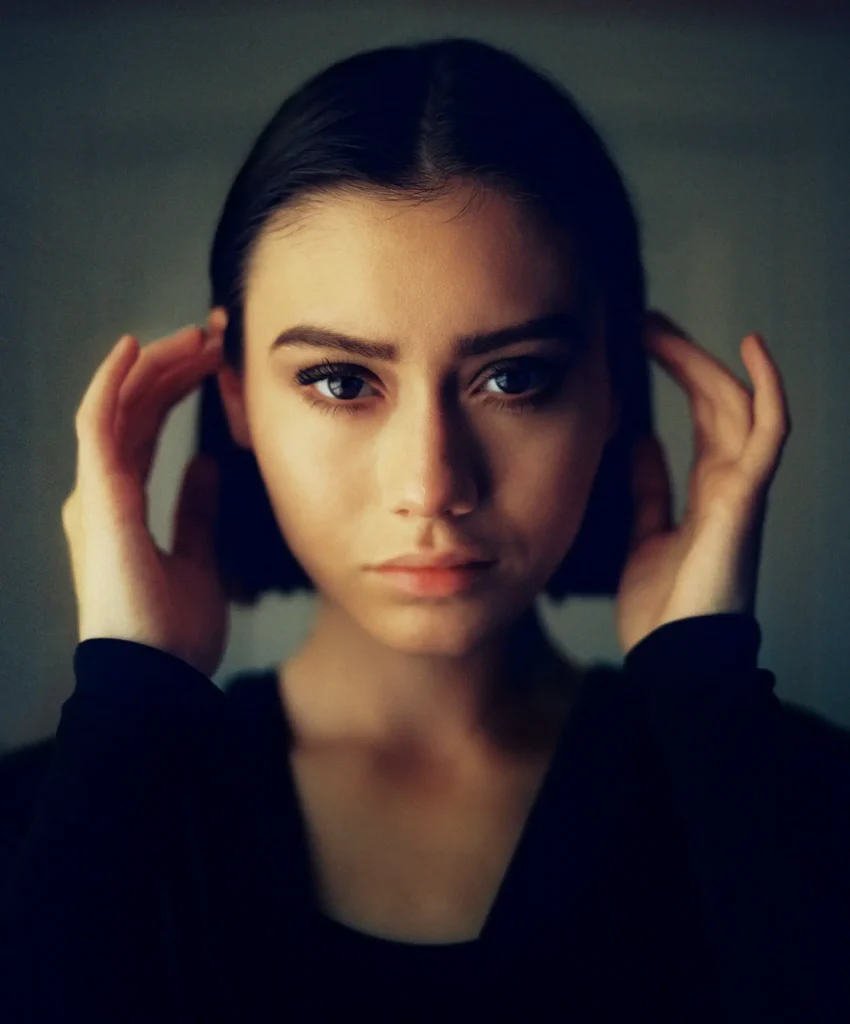
H: Oh right, so the portrait work is purely your personal work then?
S: Yes, I do make some money on it from time to time but that’s my creative outlet, it’s purely a personal pursuit and something I put great value in (the greatest!).
H: Ok, so let’s talk about the images themselves. Do you mind if we start with the technical stuff? Ever since I saw a photo you took some years ago of a redhead in some grass (I talked about that image in this article about the definition of the perfect lens, if you remember) I have been impressed by your ability to harness equipment and media to create a defined look to your work.
I know many people frown upon gear-fascination and some will likely roll their eyes at me wanting to talk about this first, but I am really interested to hear about your relationship with gear. Do you have an innate fascination in it? Or is it a means to an end? And what came first, the ideas around the sort of images you wanted to produce, or did you find the gear and then find it to have an influence on the direction your photography has taken?
S: My original fascination with film cameras was simply that they were entirely different from the digital stuff, and there was a novelty there I suppose. I didn’t care if it was the cheapest SLR you could find. Just the idea alone was enough, that the experience of taking the photo was just as important to me as the photo I wound up with at the end.
I do have a fascination with certain cameras and lenses, there’s no doubt. After the novelty wore off, I found myself looking at images online and wondering what cameras and lenses were being used. I slowly started trying different camera setups to see what spoke to me, and what made me excited to pick it up and use it. A lot of trial and error over a few years and I’ve sort of settled into the gear I have now, which I haven’t changed much in the last few years. I’m a big believer in the intangible aspects of art and creating, even the small things. If the camera makes me happy, great. For me, the camera is just a small aspect of the process but it’s still part of it, for sure. It’s all very personal.
I had no idea what I was doing for such a long time, it was just exploration and seeing what worked and what didn’t. I didn’t have a clue what I wanted to make, or how, but knew I wanted to make something that felt real to me. The ideas come first, for sure. Some gear has changed the way I work, but for me, that’s only on a hands-on, practical level. The images I see in my head are always there the same, regardless of what I’m using.
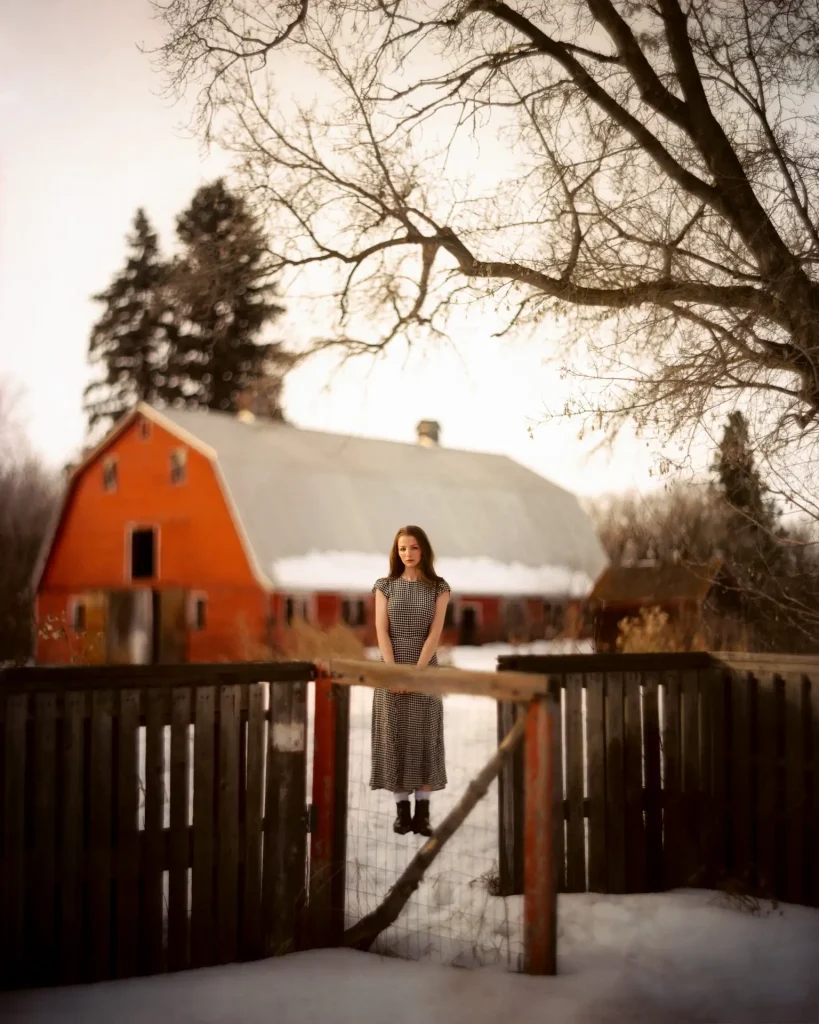
H: Interesting. Can we talk a little bit about the style then? What jumps out at me about what I would say are some of your more striking images is your use of depth of field. Quite specifically almost extreme shallow depth of field. What I find most interesting about these images – and I think what separates you from perhaps those who would take images with more of a gear-first mentality – is that it seems obvious to me that the use of depth of field is very much part of the narrative. Shallow depth of field doesn’t feel like a gimmick in your photos.
I’m interested – if you’re able and willing to share – to learn a bit about that narrative? At the risk of asking you to repeat yourself, how did you arrive at that look? What is it that inspires the images?
S: Sure thing, I think style or feeling is really hard to nail down well, describing it is even harder to do.
My photography is usually me trying to express how I feel about something, sure sometimes it’s about just having fun and making something I hope is cool. But most of the time I have this sense of needing to get something off my chest and express myself in a way that words (for me anyway) simply cannot. It’s like I know how I feel about something but when I hear the right song, or see the right photo it really hits home even harder for me.
The super-thin depth of field helps give some sort of intangible dreamy effect, surreal. That’s important to me. Plus it really puts the focus, literally and figuratively. It’s bringing the person in my photo into the only thing in focus like everything else is just a little further away, and it’s a shared moment between you and the person in the image or between the viewer and the idea or emotion there. (or so I hope, it doesn’t always work that way)
I just know how it makes me feel, and I chase that feeling all the way down the creative process. When I see something that really speaks to me, I latch on and try to learn why. The overall feel of the images is usually consistent since all these things I feel are my own and only come from one place. I’ve dealt with anxiety and depression since I was a teenager, this is just my way to explore it in a mostly healthy and useful way.
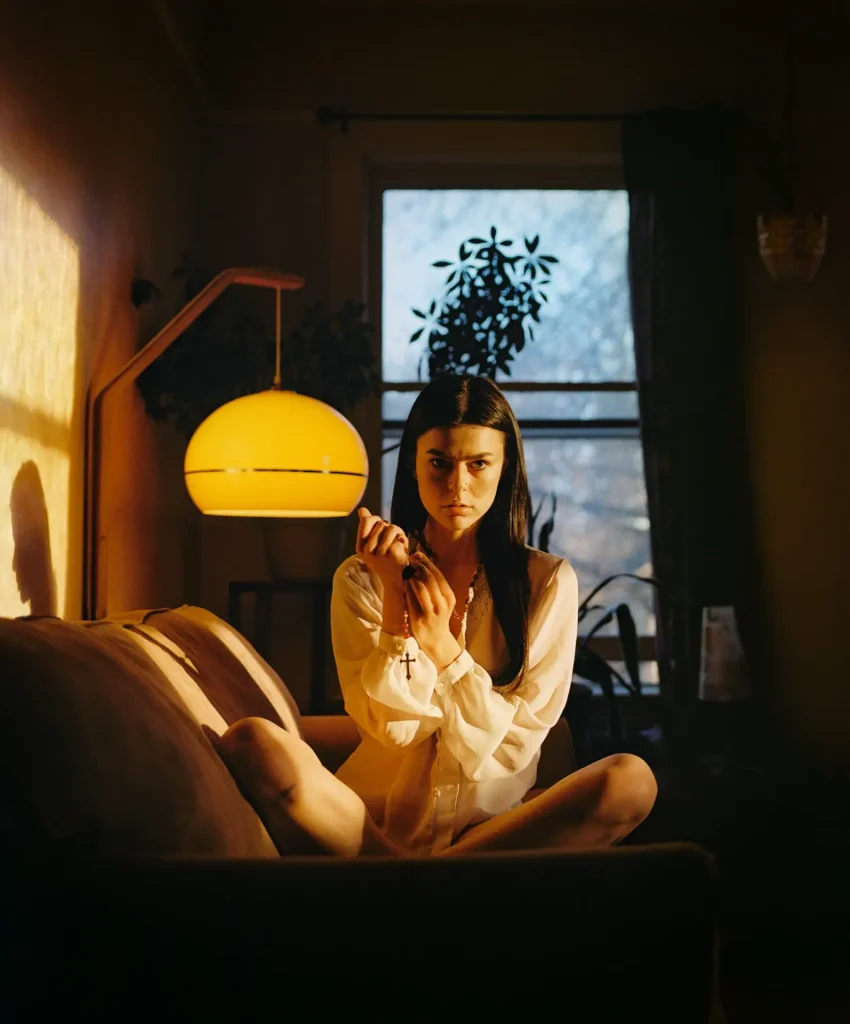
H: One of the things I talk about in the article I mentioned you in before is the perfect lens being part of a big puzzle in the image-making process. To me it seems clear that you have found your perfect lenses – would you say that’s true?
S: For me yes, the “perfect” lens is my Aero Ektar, of course, nothing is literally perfect, but all things considered I feel like this is as close as it gets.
H: For sure. I think that’s what’s so striking about your use of that lens and the shallow depth of field it allows. The emotion in the image seems so much more tangible.
But that’s not just the lens, of course, your use of colour (or b&w), light, the location even the choice of model and the quality of the models’ work seems very strong in those images. I’m honing on colour images you take with that lens specifically here, because I think they are my favourites within your work, but all of your photography demonstrates what appears to me to be the well thought out bringing together of the various elements.
I assume there is a lot of planning that goes into the creating of these images?
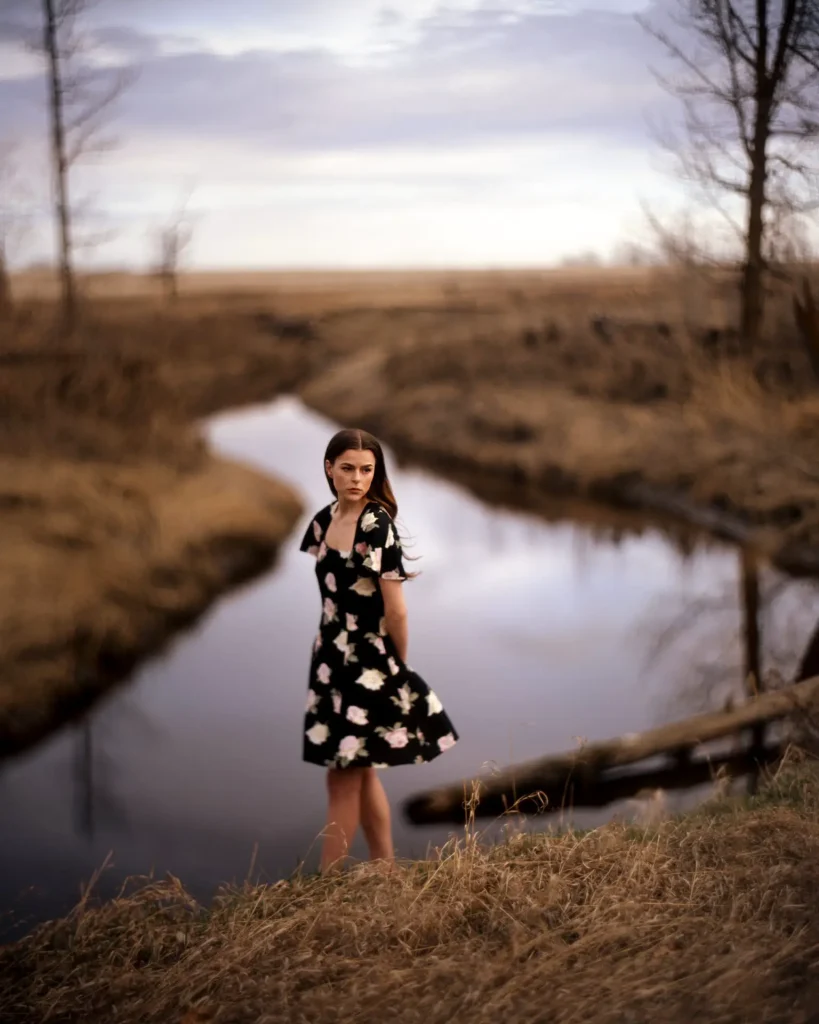
S: Thank you! For sure, there’s a lot of planning that goes into everything. Every shoot needs to have the right person involved, but of course, the location, time of day for that specific location and type of film are all extremely important. I do have a conversation with the person I’m photographing, about what I’m hoping to do, but also what sort of clothing to bring. I help select the clothing, but it’s a collaborative effort as well, and I’m always looking for input and thoughts before and during the shoot. We talk a lot and take things slowly, working on everything together. It’s a lot of planning but I like doing it that way. I go into each shoot with strong intentions.
H: This is something I really have no understanding of, so you’ll have to excuse me if this is a basic question, but your models seem just such an ideal fit for the look you go for. You have some you seem to work with regularly, is that partly because of their look, or is it an advantage working with the same models frequently as they understand better the look you are trying to achieve?
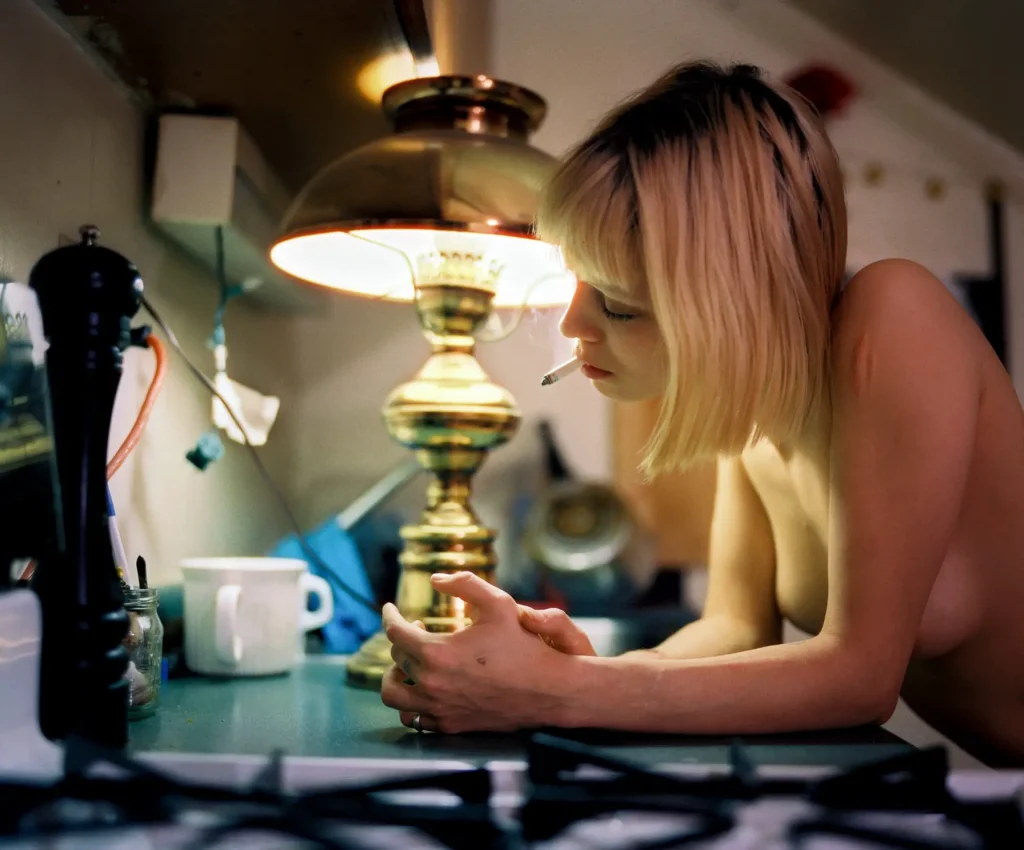
S: Over the years I’ve been lucky enough to have a small handful of people I can work with again and again. It makes a world of difference. When first getting to know someone creatively there’s always a chance things don’t work out as well as you had hoped.
Of course, finding new people is important too and I always look at their images beforehand and see if I think they’d be a good fit for me, creatively. So their “look” is important to me. But working with the same person time and time again is really what I’m after when I meet new people.
I’m looking for that someone that I’d love to work with again. This type of photography is brought to life by the people in the photo, and without them, I’d have nothing. When I meet someone that seems to speak the same creative language as me, it makes a big difference to how a shoot feels and how easy it is to get down and make things I’m excited about.
H: So do you look for a type of personality in the models you work with? I look at your images, and the models just seem such a good fit. I feel like your images capture the personality of the model really well, but am I seeing more of a reflection of your creative vision? i.e. do you choose models with a personality that fits your vision for the final image?
S: It’s hard to say about personality, but I think that goes a long way. It’s hard to talk to someone about how you’re feeling if they don’t really understand it on some personal level as well.
I think with the best shots I have so far, I see a mixture of both things – there’s a lot of me in there, but the ones that stand out the most personally are ones where I can see their interpretation and their ownership of that feeling too. Maybe it’s not always like that, but when we can understand each other better I think that’s when I work the best. No doubt there has been a few times when it’s clear that we aren’t talking the same personal/creative language. I think everyone has an idea of what they’re in this for, sometimes things don’t gel quite right and that’s usually why.
H: Interesting, yes I have always thought of your images being as interesting through the fact that they seem to tell a story of both you and your subject. As of course do the words you share with them on Instagram – which as you know I have been moved to contact you about in the past. So, and I think I know the answer to this already, do you see your work as portraiture, or is it something else?
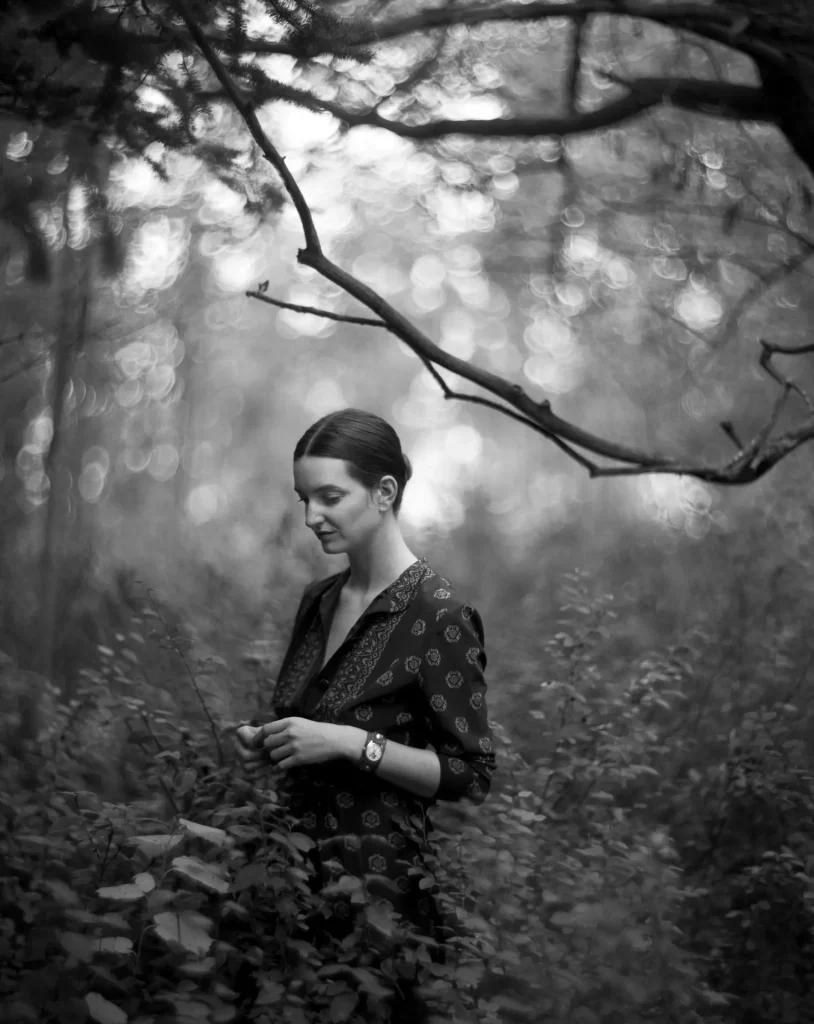
S: Often it’s just little sayings or things I’m thinking of, nostalgic for a better time, worrying about the future, or just feeling introspective. Maybe it’s a song I like or a book I’m reading, there’s always something inspiring me to create photos and pairing my images with words can be fun on social media.
I think it’s portraiture, yeah, I mean I don’t really think of myself that way much but I’ve always been shy that way about my work. But for sure I think that’s what I’d call it.
H: Ok, so from what you’ve said I’m interested to know a little bit about the workflow. Obviously you shoot film, mostly medium and large format from what I can gather. Do you take a lot of shots per sitting, or is the time more in the planning/setup on the day?
S: That’s right, medium and large format is all for my portrait work, I only really shoot 35mm for my fun stuff out on camping trips and travel, etc.
It depends on what you think a lot is. I spend a lot of time finding a good shot, compared to taking lots of photos. I still try to shoot lots if I can, but usually, for me, that means 12 to 24 sheets of 4×5 and maybe one or two rolls of 120, maybe more. But there have also been many shoots I’ve done where we spend hours shooting but only take 12 images max, the entire time.
When I see something through the camera that really stands out I will shoot it more and explore that idea or angle at greater length. Maybe shooting a few extra frames to get some variety on something I think will be nice. I don’t think it makes sense to shoot tons and tons of film hoping something will come out, simply because you took lots.
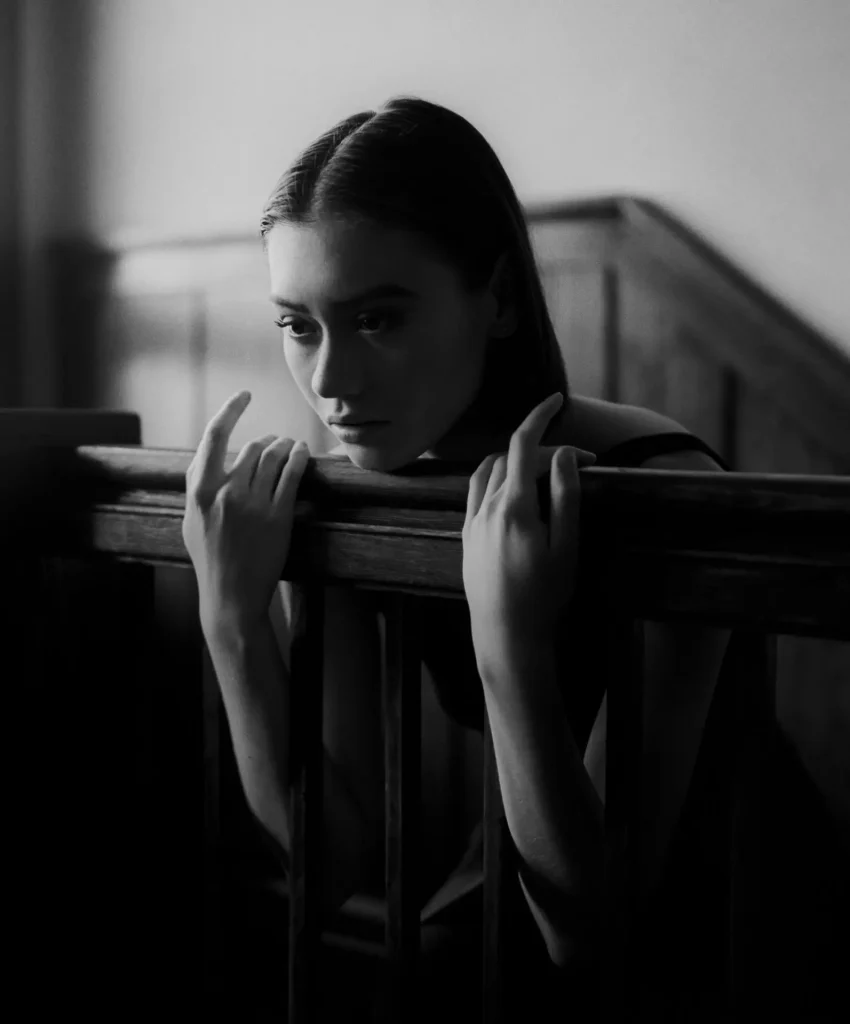
I’m sort of the other way around, I spend (probably too much) time working on everything – and there are many occasions when I’ll spend 10 minutes thinking and working on a shot and then scrap it without actually firing the shutter. There’s always a moment when viewing the screen of my 4×5 when something really stands out and everything comes together – and you feel that and get excited by what you see. That’s what I’m after. I don’t always get it, but that’s always my goal.
H: Yes, I think a lot of photographers can probably associate with that moment – I know I can. I’m not sure who it was, but I’ve seen a video of one of the Magnum photographers calling it the ‘Zen moment’ – when all of the pieces of the puzzle seem to come together and you just know you’ve got the shot.
Which takes us full circle to something you said earlier… Do you feel like by taking so much control over the light, the camera, the lens, the choice of film, and – to the degree we have talked about – the model, you increase your chance of finding those moments? Is that perhaps some of the attraction to this sort of photography for you?
S: For sure. As much as I want to say it’s all serendipity – it isn’t. That’s always there too, say with getting nice light outdoors or the location is more promising than first thought, but the amount of control and time taken is all toward the single goal of those “moments” when things fall into place and you feel excited by what you’re seeing.
I’m constantly chasing that feeling and I know I’m on the right track whenever I feel I’m energized and very focused. I think the interesting part is when myself and the person I’m photographing are both on some similar wavelength. That feeling, that moment is also heavily reliant on the other person involved.
So I think the risk/road to these feelings is a little difficult, always, for me anyway, but also more rewarding when it does happen. Lots has to go right but lots has to be worked on and brought to life (I hope anyway!).
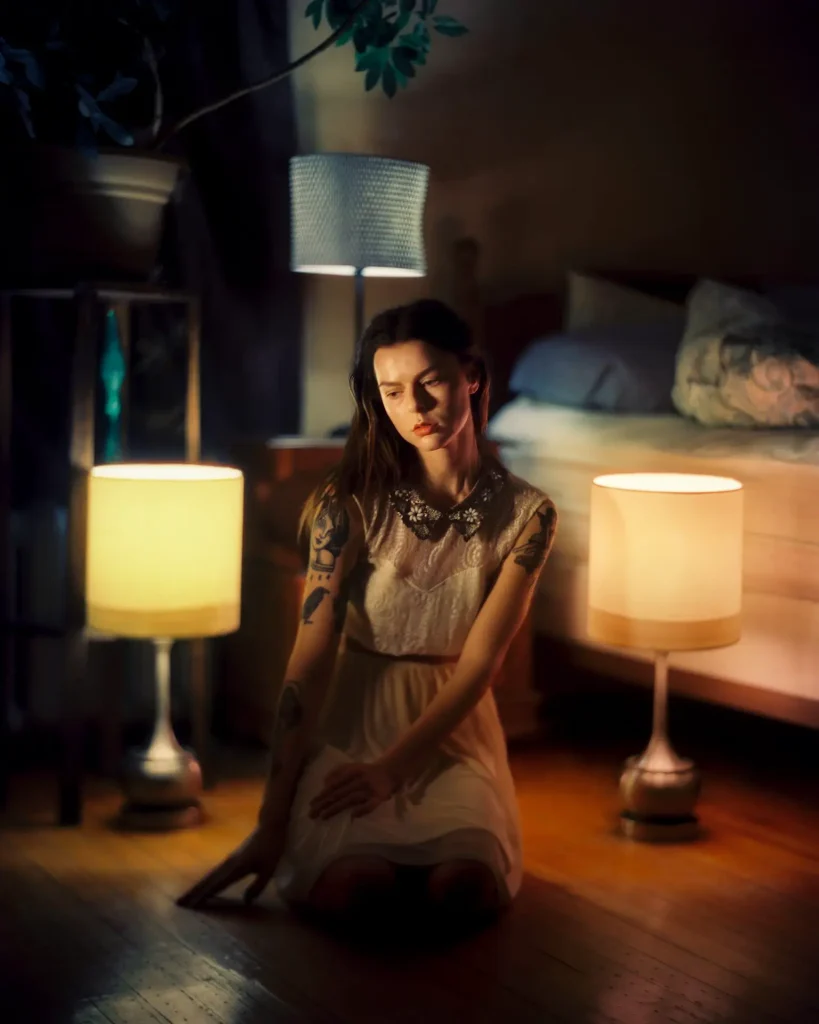
H: So what’s next then? Where do you feel you are with your work? Is there something you are chasing that’s more? Do you feel like you’re improving, changing or moving forward? And do you have a grasp of where you want to go with it, or are/do you just take it as it comes and just do what you do for the enjoyment of doing it?
S: Something I’ve always done, which came naturally to me somehow, is to look back on the last year and see what I’ve done and how I’ve come along. It’s not so much a judgment as it is an assessment. A creative inventory, sort of. If that makes sense. I’m not chasing something, but I feel like I’m always trying to grow, and move forward somehow. I’d like to think I’m improving as time goes on, but I know creativity isn’t really like that – it’s not always so easy to put a figure or value to any of it. Sometimes it’s harder to measure. For me, I like knowing I’m moving towards something, even if I don’t know what it is exactly. I want to get better, for me, there is no limit on the things we can all get better at, even one small piece at a time. I want to be better, I can never hide from that, it’s just part of me to want more. Besides a few projects that have not so much to do with my usual work, I think my main goal, overall is to keep making the photos I love, for the reasons I love.
H: I’m just going to repeat that sentence…
“I think my main goal, overall is to keep making the photos I love, for the reasons I love.”
I can’t think of a better sentiment to end this interview with, thank you!
All that remains, I think, is for you to tell my readers where they can find more of your work?
S: Thanks, Hamish. The best place to find me is either my website www.sandyphimester.com or on Instagram @sandyphimester
Share this post:
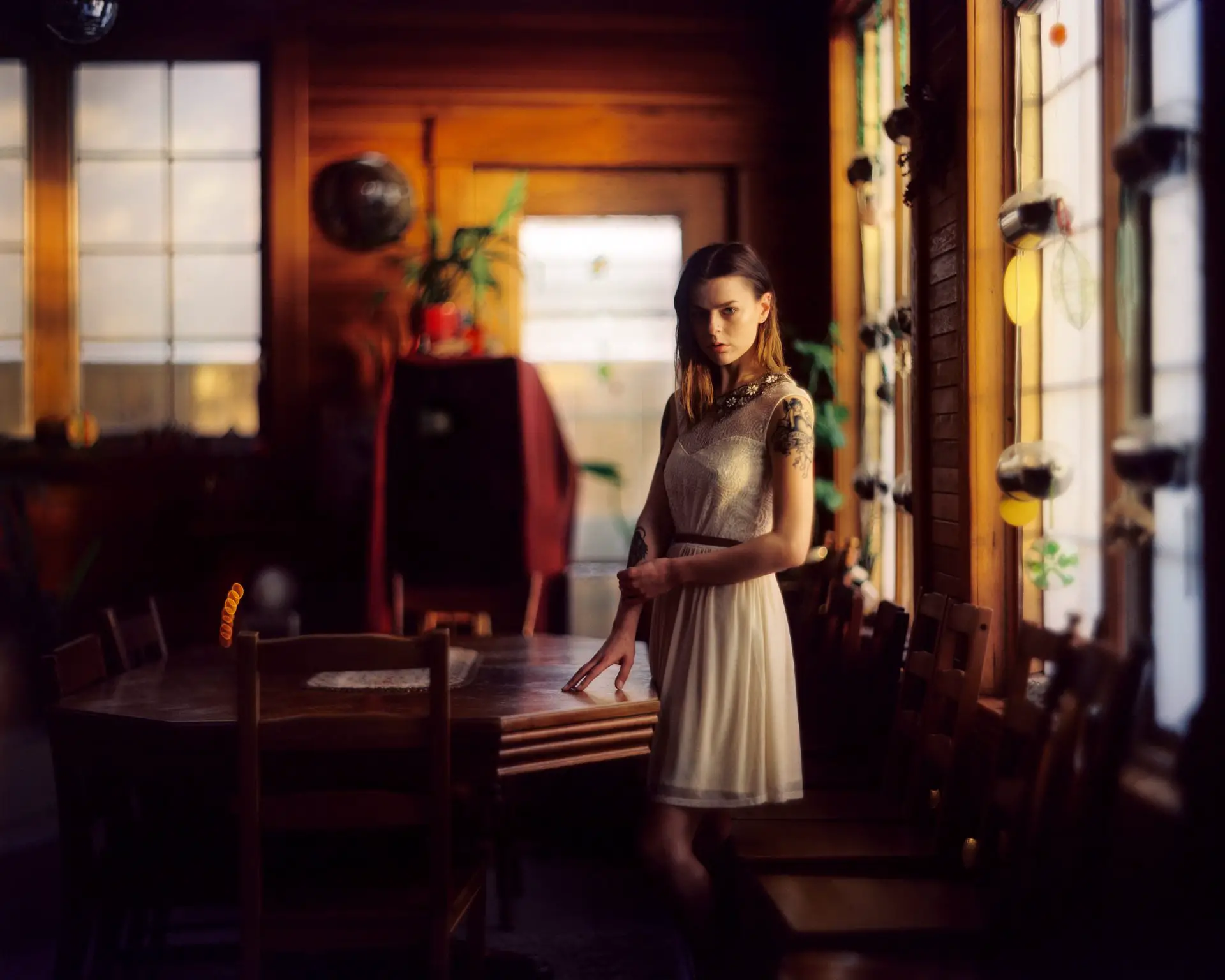








Comments
Aivaras on It’s Not all Serendipity – An Interview with Sandy Phimester
Comment posted: 29/06/2020
Jim Grey on It’s Not all Serendipity – An Interview with Sandy Phimester
Comment posted: 29/06/2020
Mike Eckman on It’s Not all Serendipity – An Interview with Sandy Phimester
Comment posted: 29/06/2020
Ultimately, the tools and the medium for what you shoot and how you shoot it are meaningless if you're not doing it because you love it.
Give someone with a passion for photography a cheap 35mm point and shoot or a cell phone and they're going to make infinitely better images than some random film student learning how to shoot technically beautiful photos that they aren't inspired themselves to take,
One question I have for you, is you mentioned being in a band. What band?!
Stephen Dowling on It’s Not all Serendipity – An Interview with Sandy Phimester
Comment posted: 29/06/2020
Nice to see what can come from the simple, thoughtful gift of a camera before a trip can lead to.
Theo Panagopoulos on It’s Not all Serendipity – An Interview with Sandy Phimester
Comment posted: 30/06/2020
Do you have a set formula on how you decide how far to take that balance or do you evaluate each image?
Fantastic read and photos. Thank you!
Aly on It’s Not all Serendipity – An Interview with Sandy Phimester
Comment posted: 30/06/2020
Peggy on It’s Not all Serendipity – An Interview with Sandy Phimester
Comment posted: 30/06/2020
Chris Pattison on It’s Not all Serendipity – An Interview with Sandy Phimester
Comment posted: 30/06/2020
Alex Luyckx on It’s Not all Serendipity – An Interview with Sandy Phimester
Comment posted: 30/06/2020
Andre Domingues on It’s Not all Serendipity – An Interview with Sandy Phimester
Comment posted: 30/06/2020
James on It’s Not all Serendipity – An Interview with Sandy Phimester
Comment posted: 30/06/2020
John on It’s Not all Serendipity – An Interview with Sandy Phimester
Comment posted: 30/06/2020
NigelH on It’s Not all Serendipity – An Interview with Sandy Phimester
Comment posted: 01/07/2020
Great read and an excellent selection of images.